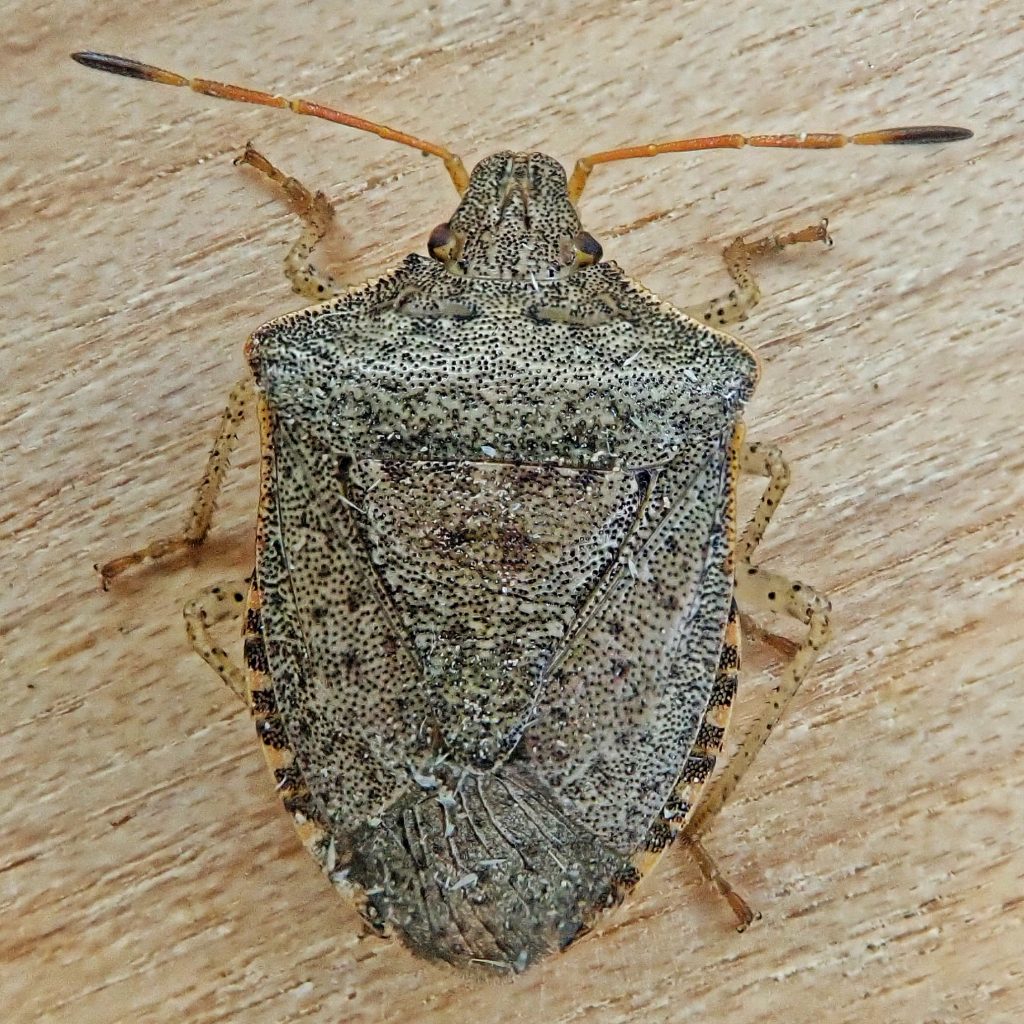
If you spend much time actively looking for bugs in open brushy areas you will probably find these Consperse Stink Bugs, although I’ve never found them in the large numbers some people talk about. Since they are stink bugs they do release odorous gases as a defense mechanism, but I’ve handled quite a few without noticing anything particularly unpleasant. They buzz loudly in flight, and will whirr their wings when threatened, both of which actions can be startling.
Many thanks to Dr. David Rider of North Dakota State University for confirming my identification of this specimen. I hadn’t found them with the spotting on the ventral abdomen (though apparently that is not uncommon), and thought a little guidance would be wise before making definitive statements as to species.
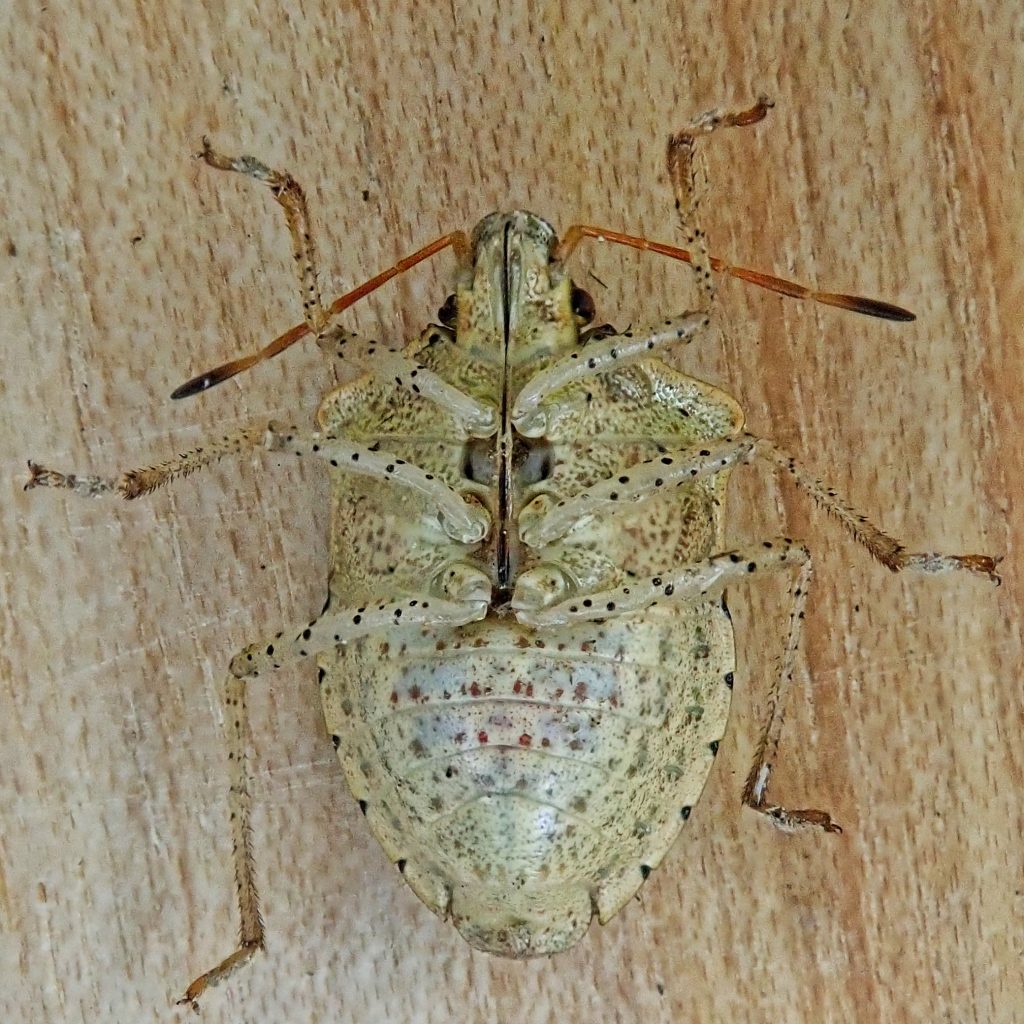
Description– Grey to brown with many dark punctures; pronotum with rounded corners; legs pale with many small, dark dots; dark marks on dorsal and ventral margins of abdomen; may have dark dots on ventral abdomen; antenna dark at tips.
Similar species– Brown Marmorated Stink Bug (Halyomorpha halys) has white bands on antenna; E. tristigmus has a row of spots in the middle of the ventral abdomen; E. servus has much less spotting on legs; E. variolarius has no spots on the margin of the ventral abdomen.
Habitat– Wherever there are plants
Range– Region wide, more common west of Cascades in the PNW.
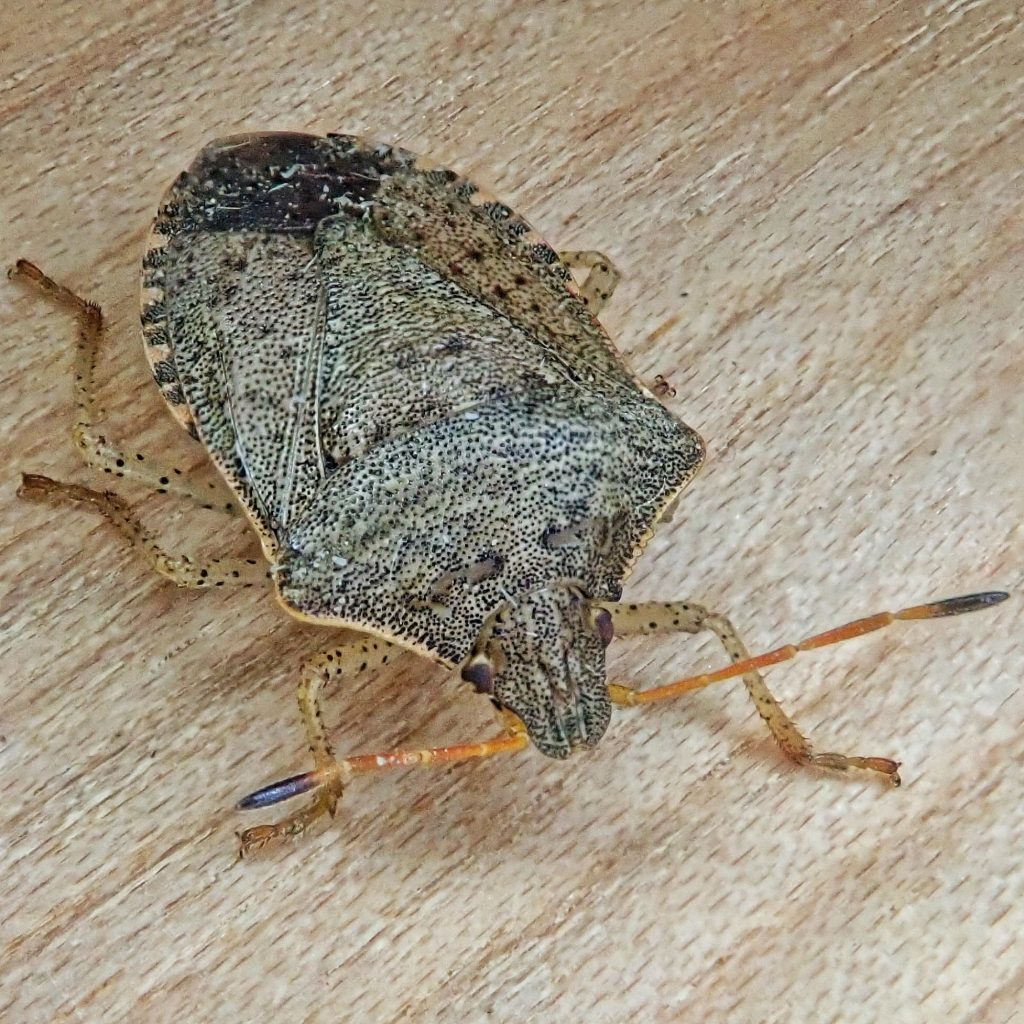
Eats– They are considered to be a minor agricultural pest of tomatoes, apples, barley and other fruits and vegetables. In natural surroundings the larval hosts and adult food sources for the Consperse Stink Bug include Lathyrus latifolius (Everlasting Pea), Verbascum thapsus (Wooly Mullein), Conium maculatum (Poison Hemlock), Silybum marianum (Blessed Milkthistle), Rubus laciniatus (Cut-leaved Blackberry), and, oddly, Pteridium aquilinum (Bracken Fern), as reported by the behavioral ecologist John Alcock (1971).
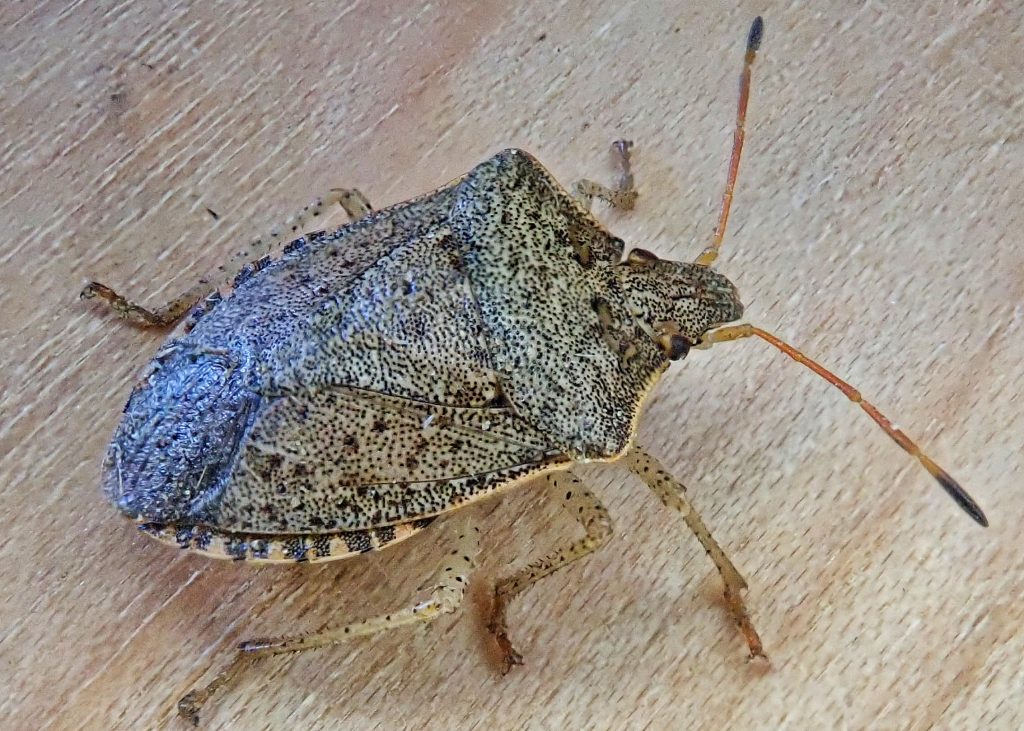
Eaten by-They are known to be parasitized by Trissolcus spp wasps, and various tachinid flies. Digger wasps (Dryudella spp) actively hunt nymphs, and Cross Orbweavers (Araneus diadematus) are the “…most conspicuously successful predator…” according to the study by John Alcock (1971), who also noted that Red-winged Blackbirds would eat them, but “… not before giving behavioral signs that they found the insects distasteful.” (Alcock, 1971).
Adults active– March through October
Etymology of names– Euschistus may come from the Greek eu,meaning good or true, and schistus, meaning divided, but I can’t confirm that , or ascertain it’s relevance to these stink bugs. The species epithet conspersus means ‘besprinkled’, and probably references the fact that this species has the most heavily spotted legs in the genus.
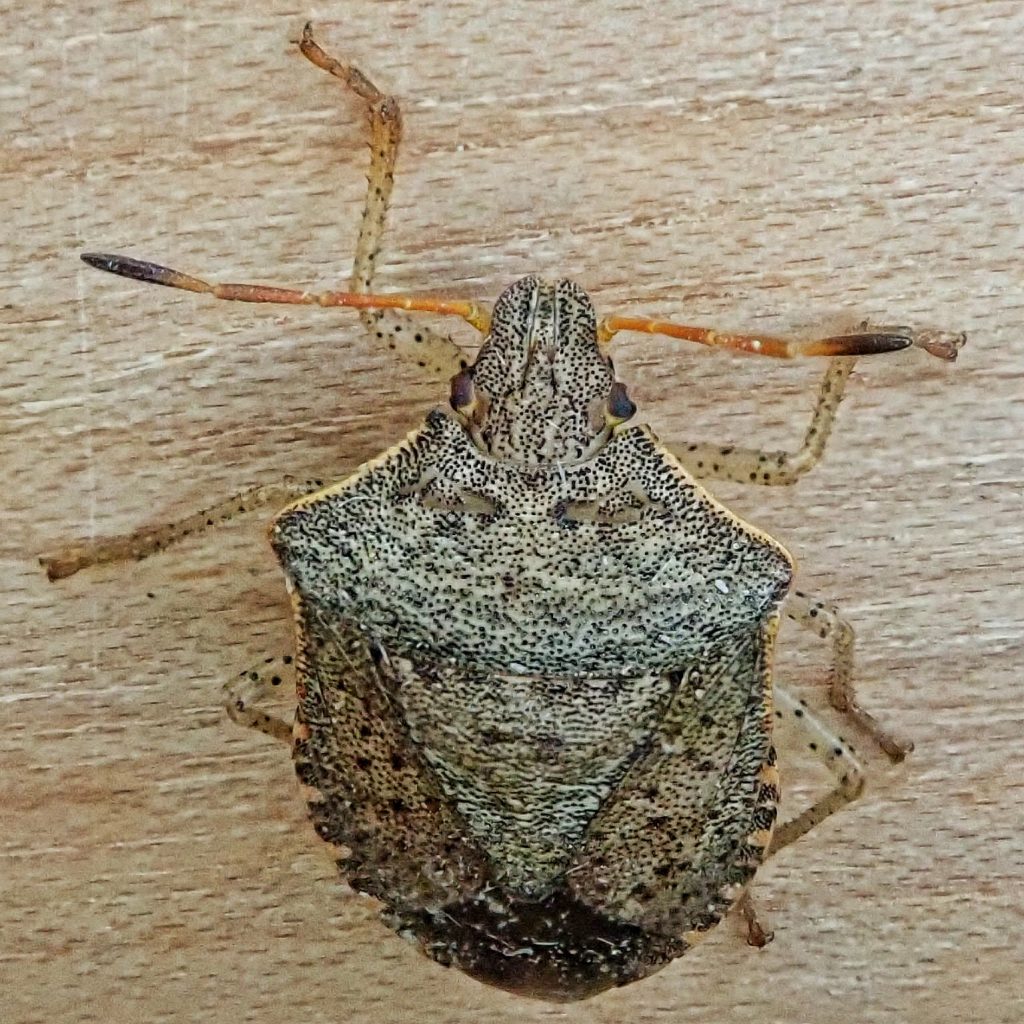
https://bugguide.net/node/view/341578
https://www.hindawi.com/journals/psyche/1971/072753/
https://extension.entm.purdue.edu/fieldcropsipm/pubs/11.pdf
https://www.grovida.us/vegetable-pests/euschistus-conspersus-uhler-hemiptera-pentatomidae.html
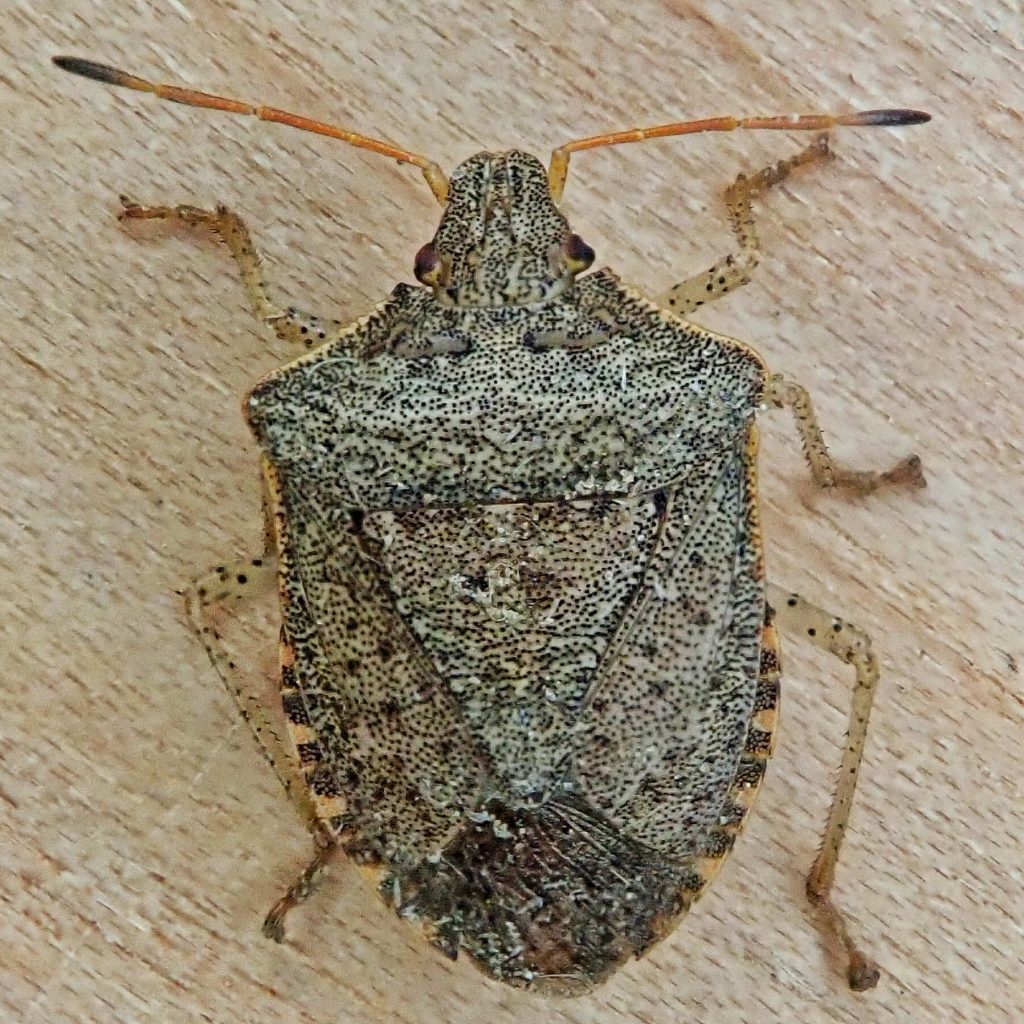
I live in Oregon where there are stink bug yearly here like clock work every October. How do all these species of stink Bugs differ from one another? Also I have read extensively on these bugs and why do so many say they don’t bite when there is evidence they Can and Have. We need to properly educate people on these Invasive Pests who ruin our days and scare our Children.
I’m sorry to hear that that is your experience. It hasn’t been mine. I agree that we need to educate people, but in my opinion that means telling folks they don’t need to fear insects. Stink bugs only enriched the days for my children, because they were not scared of them. Here is a link to how to tell the difference between some common stink bugs in Oregon
https://www.oregon.gov/ODA/shared/Documents/Publications/IPPM/StinkBugGuide.pdf